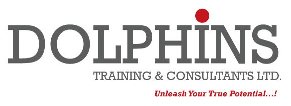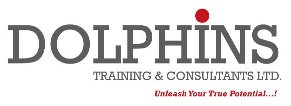
Could it be that our lives and careers are simply a reflection of our Words?
►Is the difference between a millionaire and a billionaire the words they know and use?
►Could the difference between a happy person and depressed person simply be the words they chanted to themselves?

We're all presenting virtually all the time. Interviewing for a new job? That's a presentation, and you're the brand. Giving a PowerPoint demonstration to your supervisor or board? That's a presentation, quite possibly one that could catapult your career or set you back a few notches. Don't let those opportunities go by without maximizing your chances for success.
Here are some ideas to help you stand out when you're speaking to a professional audience.
1- Involve your audience early... & often
Listeners want to be engaged, not bored. Right out of the gate, give them a reason to sit through your presentation. You have 30 to 90 seconds to grab their attention. Throw out the old rule of starting with a joke. Bad idea. I've got news for you: You're not Chris Rock.
Don't get me wrong -- injecting a humorous aside is perfectly acceptable. But throwing out such an aside is a lot different than starting with, "Two guys walk into a bar...". Instead, start by asking a question. I've seen this technique work wonders. It brings your listeners into the discussion, and sets an informal, but positive tone. Another technique used by master presenters is to refer to one or two people in the audience by name.
2- Be animated
The best presentations are given by people who are animated in both body language and vocal delivery (we'll get to the latter in a moment). Resist the temptation to hide behind a podium or to stand in one place. When I work with clients, I place a video camera in one fixed position. If they move out of frame consistently during the course of the presentation, they're animated.
Try this next time: When speaking to a group of 20 people or more, walk among your audience as you speak. Stop every once in a while, placing your hand gently on one of your listeners' shoulders (it might help to know the person the first few times you do this). Walking in the audience will help you retain their attention and create a special bond with them.
3- Deliver the goods
Spend time working on your delivery. Nobody expects you to sound like a television anchor, but it does help to have a pleasant and engaging vocal quality. There's no need for acting or voice lessons. Simply work on these four areas during the course of your presentation: Varying the tone of your voice, varying your volume, varying the speed at which you talk, and learning to pause... for impact.
Shake your distracting habits and keep it fresh---
4- Avoid distracting habits
Nothing kills a presentation more quickly than distracting habits. I watched as a CEO lost his audience by constantly playing with the change in his pocket for an entire hour. After the presentation, nobody talked about the content, but they all told me how annoyed they were by the jangling coins. Most habits are easy to break. That's why it pays off to videotape yourself every once in a while, so you can take note of poor habits that you may otherwise not pick up on.
Do you jiggle coins? Do you repeatedly scratch yourself? Or play with pens or pieces of paper? By catching yourself making annoying movements, you can easily avoid them.
5- Dress the part
Dress like the leader that you are. I once spoke to a leading CEO recruiter who said that wardrobe was the first thing he noticed upon meeting someone. He explained that, upon introductions, he wants to mentally check off a box that says, "This guy looks like a leader I want to follow." Wear clothes that are appropriate for your industry culture, but a little nicer than those of your peers in the audience.
In one of his books, real estate mogul Donald Trump admitted to formerly wearing cheap shoes because he didn't see the reason for expensive ones. He quickly learned, however, that cheap shoes wear out quickly. Trump's conclusion was that, if you want to be taken seriously, do away with cheap shoes, sneakers, ripped jeans, and stained clothes at work. The same goes for presentations. Pay attention to the clothes you wear. What are they saying about you? Look a little better than everyone else.
6- Keep it fresh
Avoid repeating the same stories and anecdotes time and time again. Change it up. A famous venture capitalist once told me that the best presentations are timely and topical. The speakers he likes best are the ones who weave current events into their presentations -- perhaps something that happened that day or that week that reinforces the reason for the discussion.
Every presentation should be modified slightly to appeal to a particular audience. The presentation you used for last week's customer might not work for today's. Staying fresh also means keeping up on trends and popular culture. One particular CEO was said to be an engaging speaker, because he could refer to everything from the latest hip-hop songs to the hottest management theories over the course of his presentation. Of course, you don't have to like Kanye West, but it might help to know who he is.
7- Rehearse to get it right
Rehearsing your presentation will certainly set you apart because so few of your competitors do the same. Most people glance at their notes or slides a few minutes prior to taking the podium, but great speakers take the time to talk it out. They know how they're going to start and how they're going to end. They know when to walk into the audience and when to place their hand on someone's shoulder. They know when to pause and when to speed up. They know where to look and when. Rehearsing will help you look and sound more polished.
command an audience
These tips will help you win over any audience -- investors, employees, customers, or colleagues. Apply them and be a star in the boardroom.
Compiled By,
Anne Kangethe
Business Development Unit.
Dolphins Group


.jpg)
.jpg)
.jpg)
.jpg)

.gif)


.jpg)
.jpg)
.jpg)


.jpg)